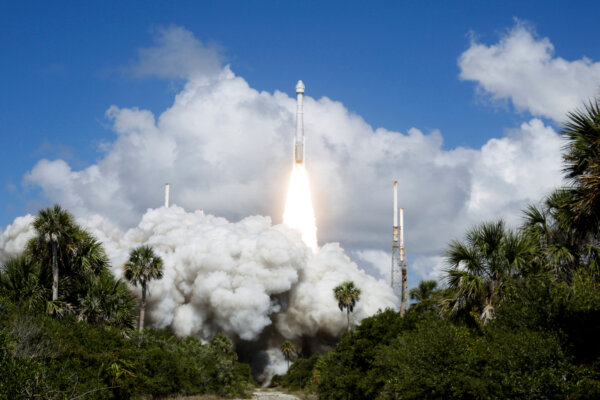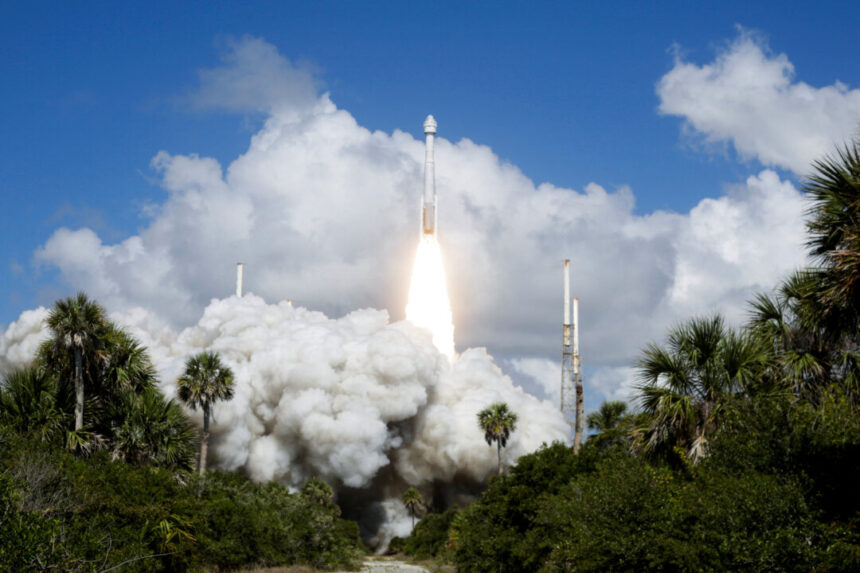
The ISS mission is a crucial test for Boeing to win NASA’s approval for more crewed space travel to replace the shuttle program, which was retired in 2011.
The terrestrial return of Boeing’s new spacecraft Starliner has been delayed to June 18 as mission analysts probe issues that could affect the capsule’s reentry, NASA and Boeing said on June 11.
The CST-100 Starliner was originally slated to undock from the International Space Station (ISS) on June 14 before returning to Earth. Boeing and NASA launched the capsule with two crew members, Barry Wilmore and Sunita Williams, on June 5.
The flight is a crucial test mission for Boeing to win NASA’s approval to certify Starliner for space travel, marking the end of a 10-year, multi-billion dollar research and development process.
NASA officials in Houston are weighing multiple factors while scheduling Starliner’s return, including resolutions to defective components, the weather, and dealing with scheduled astronaut spacewalks aboard the ISS.
Officials may announce more changes to Starliner’s return schedule throughout the mission.
By June 11, NASA and Boeing were eyeing a June 18 window to undock Starliner from the space station and land it six hours later on the desert terrain of White Sands Missile Range in New Mexico, Arizona’s Willcox Playa, or other similar locations based on weather conditions.
Starliner’s original May 6 launch date was delayed for a month after NASA and Boeing found a faulty oxygen valve and then a helium leak in the propulsion system.
After the spacecraft was launched on June 5, additional helium leaks were discovered, but officials said the leaks would not compromise the mission or its crew.
However, NASA’s deputy program manager for the ISS, Dina Contella, told reporters on June 11 that the agency had also detected a “sticky” oxidizer valve on Starliner while it was docked at the space station.
NASA then indicated via a June 10 blog post that another helium leak was found in Starliner’s propulsion system, in addition to the four leaks discovered while the spacecraft was making its way to the ISS after launching from Cape Canaveral, Florida.
During the initial flight, Starliner lost five of its 28 steering thrusters, but the crew restored four before successfully docking with the ISS shortly after. The crew missed its original docking window but was able to join the astronauts aboard the space station an hour later while hovering 260 miles over the Indian Ocean.
NASA officials said Starliner can remain docked with the space station for a maximum of 45 days.
Starliner was born out of a contract that NASA awarded to Boeing and competitor SpaceX in 2014.
The companies received $4.2 billion and $2.6 billion, respectively, to develop craft for crewed missions to space after NASA retired the shuttle program in 2011.
While SpaceX has been sending astronauts to space since 2020 aboard its Dragon spacecraft, Boeing has seen setbacks with Starliner after its first test launch in 2019 failed to dock with the ISS.
A repeat mission in 2022 docked with the space station, but the first crewed mission would not come for another two years.
If Starliner’s first astronaut-led mission is successful, it could mark a new era for Boeing’s aerospace conglomerate after years of problems with its aviation manufacturing and the 737 MAX jet.
The Federal Aviation Administration still has a production cap on the popular airplane after a midair blowout in January of a door panel on an Alaskan Airlines flight prompted a regulatory review.
Reuters contributed to this report.





